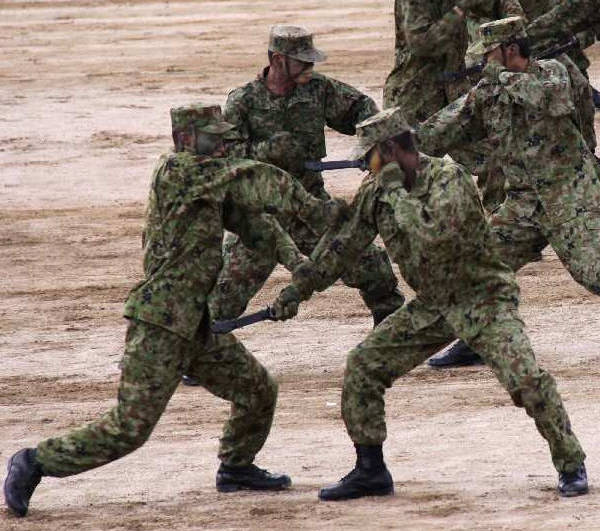Kempo is the original eclectic martial art. In the sense of the arts that it is derived from, Kempo extends back to the most ancient times in China, and its origins are lost in legend. One story relates that the monk Ta Mo (Daruma) was the first to teach Kempo in China from 527 AD onwards. However there is archaeological evidence that Kempo-like martial arts were practiced in China at a much earlier date. Kempo in Japan first developed as a result of martial arts exchange between China and Japan, and in one sense the definition of Kempo is simply any martial arts of Chinese origin that have subsequently been practiced or refined in Japan.

While there were earlier exchanges, the first major phase in the expansion of Kempo occurred during the reign of the Emperor Hongwu (1328-1398) in China and the Shogun Askikaga Yoshimitsu (1358-1408) in Japan. This was a time of unprecedented cultural exchange between the two countries, and also one of political unification, to the extent that Yoshimitsu was formally appointed t he King of Japan by Hongwu, even though technically speaking Japan already had an emperor. This was at a time when the imperial family in Japan was very weak, and nationalist sentiment was at a low ebb, so the Japanese martial artists of the time were very interested in learning from their counterparts in China.
Many martial arts masters and military experts were brought over from China to share their knowledge with the Japanese warriors (Samurai). As a result of this exchange, new eclectic systems of martial arts appeared and were later incorporated into Japanese family martial arts traditions as well as into formal martial arts systems, or ryuha.
An early application of the Kempo arts was their use by the Japanese pirates called Wako, and also by the Japanese and Chinese forces who were trying to combat them (in many cases the line between piracy and counter-piracy was extremely blurred). While they were mainly led by Japanese, the Wako counted many Chinese and South East Asian people among their ranks, many of whom brought with them yet more martial arts, ideas and practices into Kempo from their home regions.
Entering into the first part of the twentieth century a lot of Kempo development was once again going on alongside, and intermixed with, a complex re-juvenation of the Japanese spiritual traditions. The two Sino-Japanese wars (1894-1895, 1837-1945) and the attendant occupation of large parts of Chinese territory by the Japanese afforded Kempo masters serving in the armed forces the opportunity to study with Chinese martial arts masters once again, especially after the Japanese occupation had embedded itself for a significant time period in Chinese territory.
The Japanese forces had the support of the Chinese emperor, Pu Yi, which, while not exactly staving off Chinese nationalist sentiment against them, certainly smoothed the way for those Japanese martial artists who held a degree of respect for the Chinese to be accepted as students of Chinese masters. Interestingly Emperor Pu Yi was himself a practitioner of the Bajiquan style. The late nineteenth and early twentieth century exchanges, both with China and internally between martial arts in Japan, produced many able Kempo masters, some of whom became famous, while others, no less able, were less famous.
From the 1920s, the introduction of Okinawan Karate to mainland Japan by Gichin Funakoshi and others became influential in the development of modern Kempo, and the nature of Kempo continued to evolve as consequence of the subsequent explosion of popularity of both Karate and Judo in early twentieth century Japan.
By far the four most famous modern Kempo masters were (in no particular order): Master Sawayama Muneumi, who created a sporting version of Kempo known as Nippon Kempo; Master Nakano Michiomi who created Shorinji Kempo; Master Mitose Masayoshi of Kosho Ryu Kempo; and Master Sawai Kenichi of Taikiken. But there were a great many others who contributed significantly to the development of Kempo during that time. The processes of exchange between the martial arts have now produced a rich variety of 20th and 21st century Kempo in Japan, and is still on-going - encompasing such modern developments as Shin Kakuto Jutsu, Shooto and K-1, and heavily influencing the modern Japanese military.